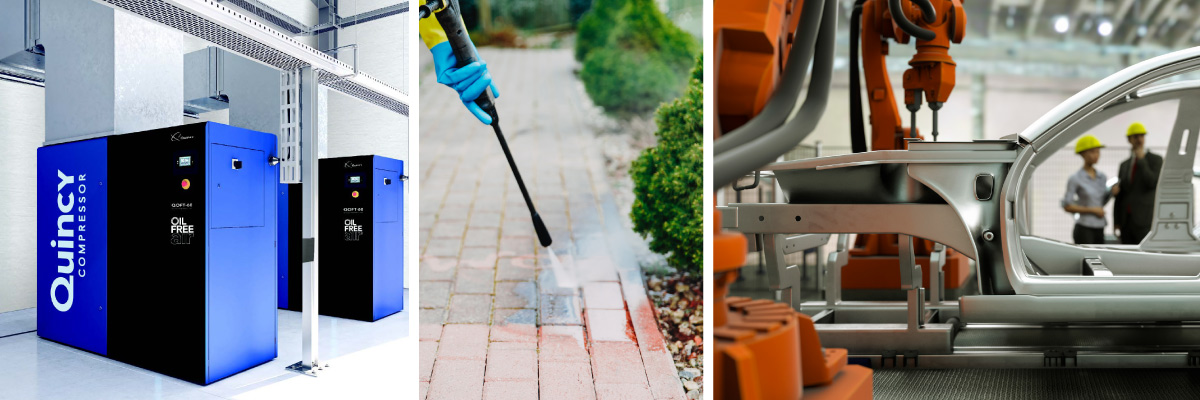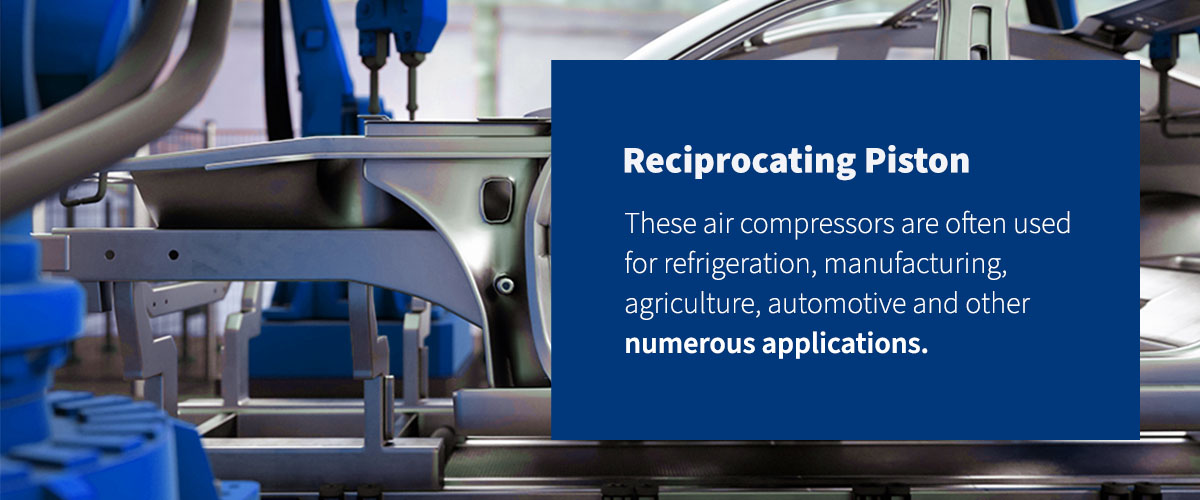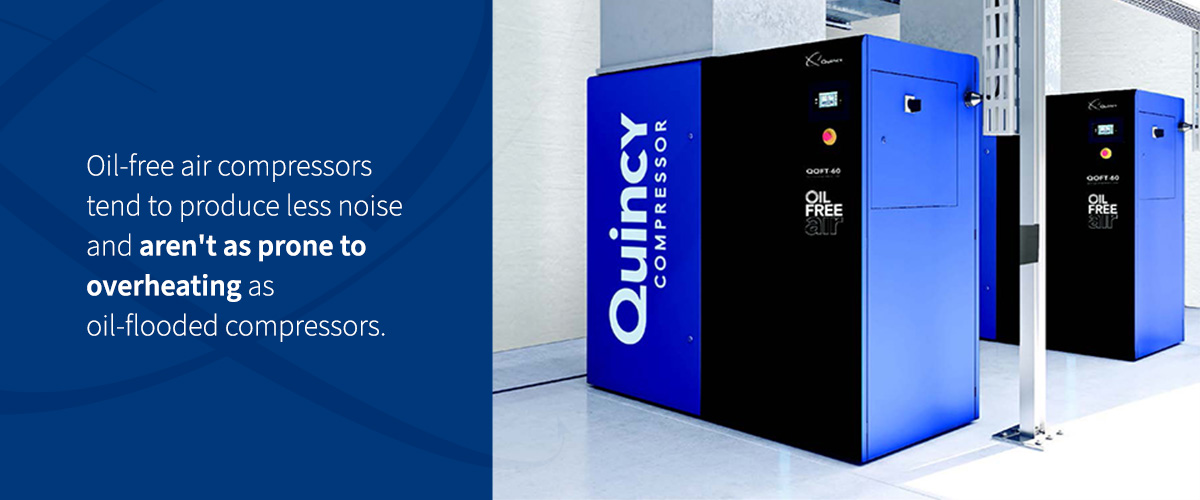Chapter 1: Types of Air Compressors

Air compressors use different mechanical components to increase the air pressure and reduce the amount of trapped air. When choosing an air compressor, you’ll want to consider the different types to ensure you make an informed choice. Here are the different air compressors you’ll find in your search.
Rotary Screw
Rotary screw compressors use two screws to reduce the volume of trapped air, with the meshed twin spiral screws working together to maximize air payout and intake. These compressors use a positive displacement system, meaning the air fills a sealed chamber and moves between the two rotating screws. The air in the chamber becomes compressed to adequate pressure for various applications.
Rotary screws can be used in heavy-duty situations where precise air control is necessary, and the flow rate is higher than some other air compressors. These compressors are extremely durable, making them reliable for all kinds of uses. They can also operate safely under extreme temperatures. Rotary screw compressors are ideal for the automotive industry because they can withstand these temperature fluctuations, especially since they require less regular maintenance and can perform for long periods.
Reciprocating Piston
If you’re looking for a commonly used and trusted air compressor, reciprocating piston compressors are the way to go. These air compressors are often used for refrigeration, manufacturing, agriculture, automotive and other numerous applications.
Reciprocating piston air compressors work by using a crankshaft, which moves the piston back and forth, reducing the amount of air. The extending piston helps push compressed air into the tank until it builds to an adequate level.
These compressors are easy to transport and don’t require a lot of maintenance. However, they can produce more heat and noise than other types of compressors. As a result, these compressors don’t often run continuously, making them better for short, powerful bursts of compressed air.
Scroll
Scroll compressors are excellent for industries requiring varying levels of intensity. These compressors work by using a spiral-shaped scroll, which moves in a circular motion to reduce air volume. These compressors are usually quieter and can last a long time, making them a popular choice.
Many industries use scroll compressors, including automotive, refrigeration and manufacturing. They produce high-quality, clean air, which many consumers love. There are oil-free models, but some require lubrication if they work at a higher pressure.
Portable vs. Stationary
You can choose air compressors that are either portable or stationary. You can easily move portable compressors across your work site or home, while stationary compressors are generally only used in one location. Mobile models tend to be lightweight and can support many tasks but sometimes don’t have a large enough tank size or specs to get bigger jobs done.
Stationary generators are larger and can’t move much, if at all, but they’re excellent for industries that need a consistent, high supply of air pressure in one location. You can choose from many different models of each type to find one that suits your needs.
Oil-Flooded vs. Oil-Free
There are two categories of oil pumps to consider when buying your air compressor: oil-flooded and oil-free.
Oil-flooded air compressors lubricate walls and bearings using oil, and the oil can sometimes splash. These systems are often very durable but can be noisy and produce a lot of heat due to their design.
Oil-free air compressors provide adequate lubrication without letting the oil contaminate the pressurized air. These compressors tend to produce less noise and aren’t as prone to overheating as oil-flooded compressors, which can help reduce the need for maintenance or repairs.
Two-Stage vs. Single-Stage
Reciprocating piston air compressors use pistons to pressurize the air in a cylinder using either a single- or two-stage process. Home air compressors often use single-stage, while compressors in businesses or industries are often two-stage.
Single-stage compressors use a single piston stroke to fill the cylinder, while two-stage compressors use two-piston cylinders to pressurize air through two different chambers. Two-stage compressors tend to make compressors more effective so you can run more tools off of a single compressor.
If you’re looking to buy a new air compressor, you’ll want to understand the differences between each type of compressor. Certain units will work better in some industries than others. Quincy Compressors can help you find the air compressor that suits all of your needs. Our experts have serviced all types of industries for nearly a century, so we have the knowledge and experience to pair you with the best unit for your requirements. Find one of our locations near you, or contact us today!



